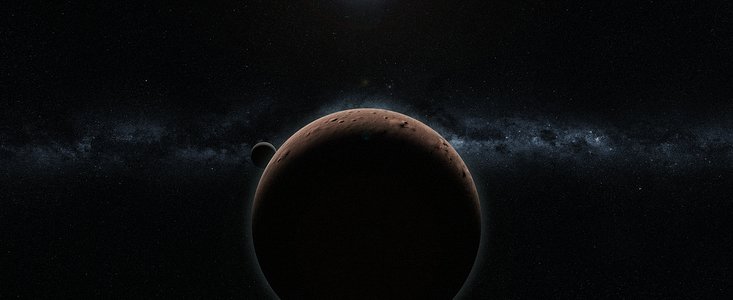- News
- Science
- Scientific Bodies
- Divisions
- Commissions
- Commission A1 Structure
- Commission A2 Structure
- Commission A3 Structure
- Commission A4 Structure
- Commission B1 Structure
- Commission B2 Structure
- Commission B3 Structure
- Commission B4 Structure
- Commission B5 Structure
- Commission B6 Structure
- Commission B7 Structure
- Commission C1 Structure
- Commission C2 Structure
- Commission C3 Structure
- Commission C4 Structure
- Commission D1 Structure
- Commission E1 Structure
- Commission E2 Structure
- Commission E3 Structure
- Commission E4 Structure
- Commission F1 Structure
- Commission F2 Structure
- Commission F3 Structure
- Commission F4 Structure
- Commission G1 Structure
- Commission G2 Structure
- Commission G3 Structure
- Commission G4 Structure
- Commission G5 Structure
- Commission H1 Structure
- Commission H2 Structure
- Commission H3 Structure
- Commission H4 Structure
- Commission J1 Structure
- Commission J2 Structure
- Commission J3 Structure
- Commission X1 Structure
- Commission X2 Structure
- Past Commission Organising Committees
- Working Groups
- Centres
- Scientific Meetings
- Rules & Guidelines
- General Assemblies
- Meeting Proposals
- Future IAU Meetings
- General Assemblies
- EC Meetings
- Officers' Meetings
- Regional Meetings
- Symposia
- Focus Meetings
- Institutional Meetings
- IAU Offices Meetings
- IAU-Sponsored Meetings
- Letters of Intent submitted for 2024
- Letters of Intent submitted for 2023
- Letters of Intent submitted for 2022
- Letters of Intent submitted for 2021
- Letters of Intent submitted for 2020
- Past IAU Meetings
- Templates
- Other Meetings
- Grants & Prizes
- Scientific Bodies
- Publications
- IAU Publications
- IAU Strategic Plan
- Symposia
- WGSBN Bulletins
- Regional Meetings
- Information Bulletins/Catalyst
- E-Newsletters
- Focus Meetings
- Transactions A
- Transactions B
- Related Publications
- GA Newspapers
- CAPjournal
- IAU Books
- Brochures
- IAU Offices
- WG Reports
- Commission Reports
- Division Reports
- Past IAU Publications
- Rules, Guidelines and Instructions for Proceedings
- Publishers
- IAU Publications
- Administration
- About the IAU
- Statutes & Rules
- IAU Policies
- IAU Executive Bodies
- IAU Secretariat
- Resolutions
- Members Administration
- Administrative Dates & Deadlines
- International Organisations Relations
- Donate to the IAU
- Training in Astronomy
- Astronomy for Education
- Astronomy for Development
- Astronomy for the Public
- Office for Astronomy Outreach
- FAQ
- Themes
- Satellite Constellations
- Astronomy in Everyday Life
- How to Report a Discovery
- Careers in Astronomy
- Defining our Place in the Cosmos
- The Constellations
- Light Pollution
- Measuring the Universe
- Near Earth Objects
- How to Participate in Astronomy Research
- Naming of Astronomical Objects
- Naming of Exoplanets
- Buying Star Names
- Naming Stars
- Pluto and the Solar System
- IAU Member Statistics
- Our Moon: the Moon
- Meteors & Meteorites: The IAU Definitions of Meteor Terms
- UNESCO-IAU Portal to the Heritage of Astronomy
- Social Media
- Past Events
- Call for Online Resources
- Astronomy@Home Awards
- Contact
ann19021 — Announcement

10 April 2019
Astronomers Invite the Public to Help Name Kuiper Belt Object
Three astronomers, Meg Schwamb, Mike Brown and David Rabinowitz, are inviting the public to help name a Kuiper Belt Object in the outer Solar System. Discovered in 2007, the object was given the designation 2007 OR10 by the Minor Planet Center in November 2009, but has yet to be given a permanent name.
2007 OR10 follows an elliptical orbit beyond Neptune, placing it in the Kuiper Belt. Observations have revealed that it is among the ten largest known Kuiper Belt Objects, and is big enough for its gravity to have made it round. It is mostly rock and ice, and the water ice on its surface is thought to indicate cryovolcanism in its early history. It has a distinctive red colour, which it owes to trace amounts of methane ice on its surface. A moon was discovered orbiting 2007 OR10 in 2016.
As is customary for such objects, the discoverers have been given the opportunity to suggest a permanent name for it. They must submit their suggestion to the International Astronomical Union’s (IAU) Committee for Small-Body Nomenclature, which is responsible for officially naming objects.
Suggestions must adhere to IAU naming guidelines, according to which bodies like 2007 OR10 must be named after a deity which reflects their characteristics. The discoverers have researched and identified three potential names, taken from deities that have links to the colour red, to themes of inside turning outside or to water, ice and snow. The three names also have connections to other mythological creatures and deities, leaving open possibilities for naming the moon, which may be suggested by its own discoverers.
The team are asking the public to get involved in choosing the best name for the Kuiper Belt Object 2007 OR10, which they can do by voting online. Voting closes on 10 May 2019, after which the discoverers will submit the most popular name for consideration by the IAU.
More information
The IAU is the international astronomical organisation that brings together more than 13 500 professional astronomers from more than 100 countries worldwide. Its mission is to promote and safeguard astronomy in all its aspects, including research, communication, education and development, through international cooperation. The IAU also serves as the internationally recognised authority for assigning designations to celestial bodies and the surface features on them. Founded in 1919, the IAU is the world's largest professional body for astronomers.
Links
Contacts
Meg Schwamb
Email: mschwamb.astro@gmail.com
Jana Ticha
Email: jticha@klet.cz
Lars Lindberg Christensen
IAU Press Officer
Garching bei München, Germany
Tel: +49 89 320 06 761
Cell: +49 173 38 72 621
Email: lars@eso.org
